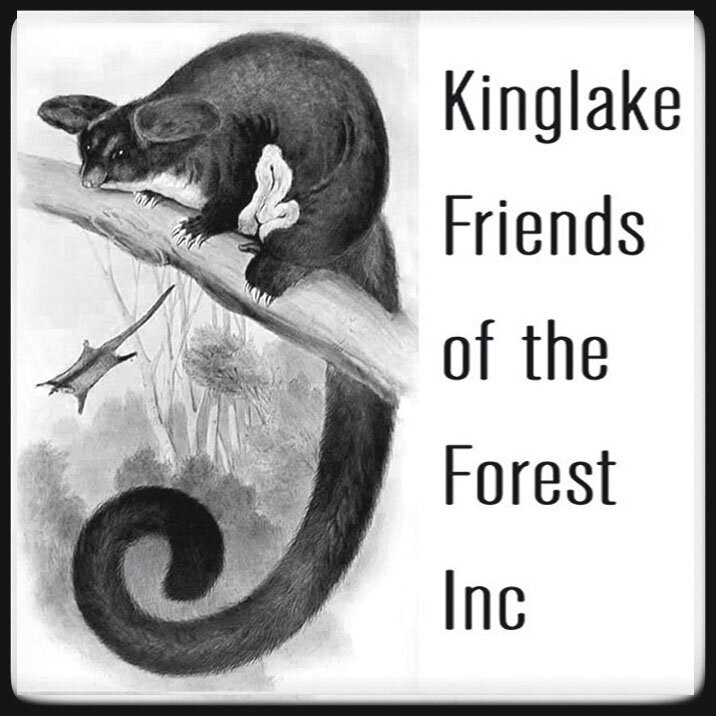Please check here on the day of the event. It will not run in the case of a Total Fire Ban.
Spotlighting at “The Nest”, meeting at 7pm at the intersection of Victoria Range Rd, Spraggs Rd, and Marginal Rd.
PLEASE READ: If travelling from the south (Melbourne), get to the meeting point via Marginal Rd, not Victoria Range Rd or Spraggs Rd. Marginal Rd is 2WD friendly all the way from the Melba Highway. If google maps tries to direct you down other roads and tracks ignore it, or you may end up in a 4WD pickle…
This might be your last chance to see the endangered Greater Gliders and other inhabitants of “The Nest”, Toolangi, before the government sets their forest on fire in planned burn HR-MUR-TLG-0011. The burn is scheduled for this Autumn.
It is possible that with enough community pressure it could be stopped.
On our last spotlighting night in this location on January 18th we saw an astounding 20 Greater Gliders, plus one echidna, two Bobucks, a pobblebonk frog, southern tree frogs and countless microbats. We were also serenaded by the threatened Yellow Bellied Glider, its weird and wonderful shriek-call sometimes described as a cross between the sound of a pig and an espresso machine frothing milk. Government records show that there are also Sooty Owls, Powerful Owls, and Barred Galaxia in this forest.
All of these animals will be affected by the collapse of hollow-bearing trees that results from planned burns (25% of hollow trees reached by fire collapse) and the mammals will likely be cooked in their hollows or choked by smoke. The fish face a different death. As stated by the Department of Environment’s Black Saturday Victoria 2009 – Natural values fire recovery program report for the Barred Galaxia states "the water chemistry and quality of streams can be altered by inputs of smoke, ash and fire retardants. The direct impacts of fire can result in immediate death or displacement of small numbers of fish to entire fish populations."
"Following fire events, changes in the surrounding landscape indirectly influence aquatic systems. Increases in water temperature occur primarily because of lack of riparian shading, but also due to channel simplification, topographic shading, and hydrologic changes. Loss of vegetation and changes in soil structure increase the likelihood of soil erosion, as well as greater and more variable stream flows. Rainfall events flush sediment and ash into streams, smothering instream habitat and causing fluxes in nutrient levels and reductions in water quality."
"Barred Galaxias populations are small, fragmented and isolated; therefore they are highly susceptible to the effects of fire. Management actions are necessary to ensure the survival and recovery of threatened Barred Galaxias populations within fire-impacted areas."
Recent research by Don Driscoll et al, published in Nature showed that "sites with high fire frequency (three or more fires in the 40 years preceding 2019–2020) had negative effects that were 87–93% larger compared with sites not burnt or burnt once over the same period." (Planned burns are included, they are not just talking about bushfires).
You can read the whole paper here: "Biodiversity impacts of the 2019–2020 Australian megafires"
Fire history records show that most of the forest within HR-MUR-TLG-0011 has experienced either 2 or 3 fires in the last forty years. Recent fire history is:
a planned burn in 1982 or 1988
a planned burn in 2005 or 2007
the 2009 bushfire
By 2028 (in just 3 years) the whole area will be down to 2 fires within the critical 40-year bracket, giving this forest and the many threatened species that live there resilience in the face of a bushfire. If HR-MUR-TLG-0011 goes ahead this resilience will be lost and not regained until 2045 or 2047.
But … is all of this carnage justified if it protects human lives and property? More and more research is coming out showing that planned burning either does nothing to reduce long-term fire risk or is actually increases forest flammability by producing a dense flush of regrowth close to the ground, drying out the forest, and reducing canopy wind shelter (don’t take our word for it, read more here: https://www.anu.edu.au/news/all-news/prescribed-burning-could-be-making-aussie-forests-more-flammable)
Indeed, forest across the road from HR-MUR-TLG-0011 that was burnt by the government in 2021, is now completely dominated by a dense shrub layer of Acacia myrtifolia. Burning in this particular forest ecosystem seems to give no more than a year of reduced fuel load before the near-surface fuel becomes denser and dryer than it was before the burn.
The answer to protecting ourselves from bushfires isn’t to do nothing. We are calling on governments to redirect funds away from planned burning and into the rapid detection and suppression of bushfires. As stated in this brilliant Age article: “Many of the largest fires in recent years were tiny in their first days, but we didn’t have the technology, personnel and equipment to put them out. We can change this.”

